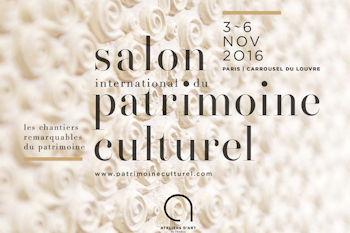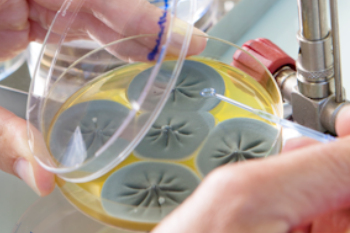

 15/09/2016
Bioguess, a CSTB subsidiary, at the International Heritage Show
From the 3rd to the 6th of November 2016 at the Carrousel du Louvre, heritage professionals meet Bioguess experts.They share savoir-faire and innovations for a better preservation and valorization of historical buildings and the works of art they keep in. We will present the fungal biosensor, result of more than 10 years of research. This technical solution notifies, at a very early stage, the presence of mold in indoor air. It performs especially in museums and historical monuments to prevent cultural heritage degradation and to preserve people’s health.
15/09/2016
Bioguess, a CSTB subsidiary, at the International Heritage Show
From the 3rd to the 6th of November 2016 at the Carrousel du Louvre, heritage professionals meet Bioguess experts.They share savoir-faire and innovations for a better preservation and valorization of historical buildings and the works of art they keep in. We will present the fungal biosensor, result of more than 10 years of research. This technical solution notifies, at a very early stage, the presence of mold in indoor air. It performs especially in museums and historical monuments to prevent cultural heritage degradation and to preserve people’s health.
 15/09/2016
Challenge received wisdom on mold!
Detectable to the naked eye, specific smell, the result of excessive air humidity… As many prejudices that we have to fight to detect and limit fungal infestations effectively. The protection of your health and your heritage depends on it.
15/09/2016
Challenge received wisdom on mold!
Detectable to the naked eye, specific smell, the result of excessive air humidity… As many prejudices that we have to fight to detect and limit fungal infestations effectively. The protection of your health and your heritage depends on it.
Mold is always visible WRONG. Today, in France, more than a third of the housing stock is contaminated with mold but only 10% of these contaminations are visible to the naked eye. Generally we estimate that 70% of fungal infestations are invisible or hidden (behind a coating for example).
Mold has a specific and identifiable smell WRONG. Mold does not always release specific odors. It is almost impossible to establish the presence of contamination based only on our sense of smell. However, this one could help us to know if a room needs to be ventilated (musty or damp smell).
Mold appears further to a raise of air humidity WRONG. A study carried out by Dr. Stéphane Moularat on 496 dwellings shows that the only measure of air relative humidity is uncorrelated with mold appearance as it needs liquid water to grow. Thus environments with hygroscopic materials will present a “dry” air that does not prevent fungal development. Conversely, many “humid” environments don’t present fungal growth. It can also be explained by the common sampling method that implies an integrated measure without considering limited “humid” areas.
